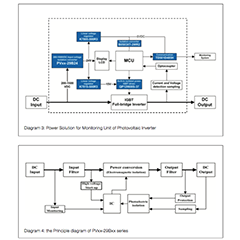Words: Min Qin, FAE, MORNSUN
The Paris 2015 Global Climate conference achieved a carbon emission reduction agreement that is legally binding and practical to all parties, which further propel the development and popularity of the new green energy technology, e.g. photovoltaic industry, wind power.
In 2015, China passed the Economic and Social Development 13th Five-Year Plan, which includes the continuous development plan for the PV power market and it aims to build more PV power facility to offer 150 GW. With the support of domestic and foreign policy, market demand, as well as the development of energy internet, PV power will grow in scale, will offer more intelligent control, which will help to reduce the cost of photovoltaic, promote technological innovation and update the industry.
The common goal of the global PV power industry is to create a type of clean energy with lower costs and higher-efficiency. Currently, the PV power system is built on the design of 1000Vdc input. However, the line loss can be reduced if the system can accept higher voltage input, which can have an extra efficiency increment of 1.5%~2.0%. The market research report by GTM estimated that the 1500Vdc PV power system would account for 9% of the global demand in 2016, which is equal to 4.6GW. Therefore, the 1500Vdc PV power system will inevitably be a growing trend in the power industry.
Basic structure and requirement of the PV power generation system
A PV power generation system contains solar panel, combiner box, DC power distribution cabinet, inverter and
boosting transformer (Diagram 1: PV Power generation System). In this system, in order to reduce the wiring between solar panel arrays and the inverters, the arrays are built by group and connected in parallel to get electric combination into the solar combiner and then the DC will be provided through DC cabinet to solar inverter and then into the power grid.






























